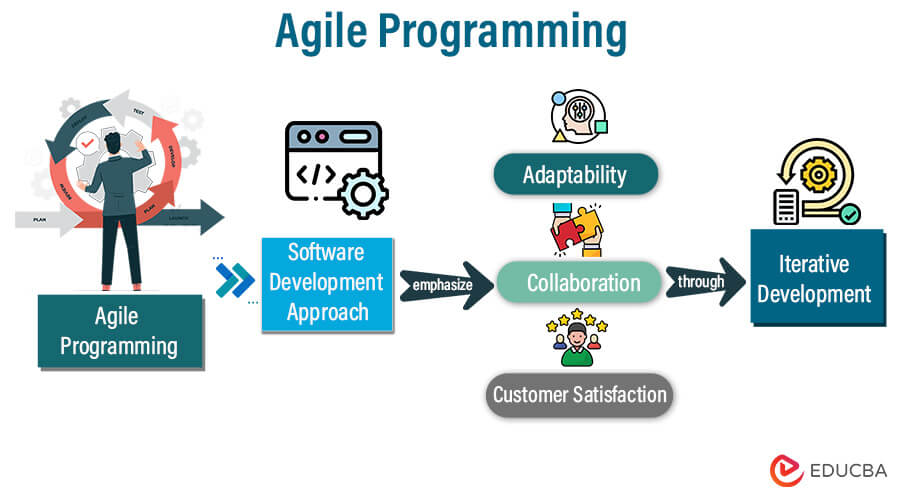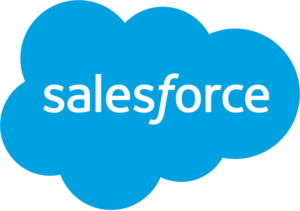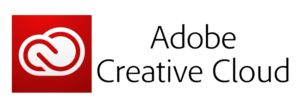Updated October 5, 2023
Introduction
Agile Programming is a dynamic and customer-centric approach to software development that has revolutionized how teams create and deliver software solutions. Unlike traditional methods that follow rigid and predefined processes, Agile embraces change, encourages collaboration, and places the customer at the center of the development process. It has gained widespread popularity in the technology industry and beyond due to its ability to deliver high-quality software quickly and efficiently.
In this article, we will fish around the core concepts of Agile Programming, explore its fundamental principles, explore popular Agile methodologies, discuss the education and training required for successful implementation, highlight its numerous benefits, and outline best practices for Agile project management. Additionally, we will provide real-world examples of organizations that have successfully embraced Agile methodologies to achieve remarkable results.
Table of Contents
- Introduction
- What is Agile Programming
- Why use agile programming?
- Core Principles of Agile Programming
- Methodologies
- Education Required
- Benefits
- Best Practices
- Examples
What is Agile Programming?
Agile programming is a method or technique used to develop and create new software; it uses the iterative approach, which means that when new or additional requirements are discovered and found, they are added to the process.
When a software engineer decides to come up with new software, there are certain steps that he/ she follows like getting the list of all the requirements needed to complete this software, planning out the architecture and design of the software, writing the test code, testing the software, and finally working out any bugs. These are certain basic and fundamental steps that go into developing new software of any kind.
However, as software became more complicated, this approach no longer seemed to be practical as, in a way, you are assuming that the developer already knows what he will need before the project even begins. With new software projects, developers do not know what things they will require before the project begins.
This is where agile programming came into effect; as and when new requirements are found, they are added to the process.
Why use agile programming?
Agile software development methods have been extensively used to develop software products. However, these techniques can be applied to developing non-software products, such as computers, motor vehicles, medical devices, food, clothing, and music.
Some of the wider principles of agile software development have also found application in general management (e.g., strategy, governance, risk, finance) under the terms business agility or agile business management.
Core Principles of Agile Programming
The core principles of Agile programming include:
- Customer Satisfaction with Continuous and Early Software Delivery: Agile software development prioritizes delivering functional software to customers as early and frequently as possible. This helps incorporate customer feedback during development, resulting in a product that aligns with customer needs and expectations.
- Accommodate Changing Requirements: Agile acknowledges that software development requirements are prone to change and welcomes these changes, even late in the development process, to benefit the customer’s competitive advantage.
- Frequent Delivery of Working Software: The Agile methodology provides frequent, gradual releases of functional software. It divides the project into smaller, more manageable segments, and each iteration produces a product increment that the team can ship. This approach ensures continuous advancement and enables the team to make modifications based on customer input.
- Collaborative Approach: The Agile methodology emphasizes collaboration between cross-functional teams, stakeholders, and customers. Through regular communication, everyone involved in the project stays aligned on goals and progress, leading to shared understanding and better decision-making.
- Supportive Environment for Motivated Individuals: Agile also creates a supportive environment for motivated individuals by providing them with the resources, support, and creative freedom they need to take ownership of their work. This trust and autonomy empower team members to achieve their objectives.
- Face-to-Face Communication: Agile highly values face-to-face interaction for effective communication and quick problem resolution, even though technology offers various communication tools. Agile prefers direct communication for conveying complex information. When face-to-face interaction becomes impossible, Agile emphasizes the need for clear and frequent communication through alternative means.
- Measure Progress Primarily through Working Software: Agile prioritizes functional software over comprehensive documentation as the primary measure of progress. Although documentation is important, tangible results through working software are the ultimate goal of Agile development.
- Maintain a Sustainable Pace of Work: To ensure a healthy work-life balance and prevent burnout, agile teams maintain a consistent and sustainable pace of work. This leads to higher productivity and quality of work in the long run.
- Prioritize technical excellence and good design: Agile promotes technical excellence and good design practices to keep the software maintainable, scalable, and adaptable to future changes. Continuous attention to these aspects contributes to the overall quality of the product.
- Simplicity: Agile advocates for simplicity in software development. Keeping things simple reduces complexity, making understanding and maintaining software easier.
Methodologies
Here are some of the most widely adopted Agile methodologies:
1. Scrum:
- Scrum is a prominent Agile methodology distinguished by short, time-boxed development cycles known as sprints that usually last two to four weeks.
- A Scrum team comprises a Product Owner, a Scrum Master, and a cross-functional development team.
- Scrum ceremonies include daily stand-up meetings (daily scrums), sprint planning, sprint review, and sprint retrospectives.
- At the end of each sprint, Scrum focuses on providing a potentially shippable product increment.
2. Kanban:
- Kanban is a visual workflow management system emphasizing work-in-progress (WIP) limitations and continuous flow.
- Kanban boards visualize tasks, allowing teams to observe how work progresses through different stages.
- Unlike Scrum, Kanban does not use time-boxed iterations, and work is drawn into the system when capacity allows.
- Kanban is adaptable and frequently used for support and maintenance activities and new development.
3. Extreme Programming (XP):
- Extreme Programming is well-known for its engineering practices, prioritizing code quality, automated testing, and continuous integration.
- XP incorporates practices such as Test-Driven Development (TDD), pair programming, continuous delivery, and frequent releases.
- The customer is heavily involved in the development process, and XP emphasizes providing small, frequent releases of working software.
4. Feature-Driven Development (FDD):
- FDD aims to identify, develop, and implement specified features or functions of a software system.
- It divides development into short iterations and concentrates on feature-level progress.
- Domain modeling, feature lists, and feature-by-feature design and development are all used in FDD.
5. Lean Software Development:
- This methodology applies lean principles influenced by manufacturing practices to software development.
- It focuses on reducing waste, increasing learning, and delivering value to customers as effectively as feasible.
- Lean supports continuous improvement and the pull system, which pulls work depending on actual demand.
6. Dynamic Systems Development Method (DSDM):
- DSDM is an Agile approach created primarily for projects with short deadlines and fixed budgets.
- It provides a framework for prioritizing features and assuring on-time delivery by constraining scope and allowing for flexibility in other project factors.
7. Crystal:
- Crystal methodologies are a collection of Agile approaches that vary in complexity depending on the size and criticality of the project.
- Different “colors” of Crystal methods are used in different project contexts, ranging from the simple Crystal Clear to the more complicated Crystal Red and Crystal Maroon.
8. Disciplined Agile Delivery (DAD):
- DAD combines Agile and Lean principles with a wide range of lifecycles and practices, allowing businesses to select the approach that best meets their objectives.
- It offers guidance on architecture, design, testing, programming, and other development elements.
Education Required
Individuals and teams can benefit from specific knowledge and training to effectively implement Agile methodologies. While there are no strict educational requirements, here is a breakdown of valuable education and training options for Agile programming:
- Agile Fundamentals Training – Understanding Agile methodologies’ core principles and practices is essential. Consider taking Agile training courses like Certified Scrum Master (CSM), Professional Scrum Master (PSM), or Agile Certified Practitioner (PMI-ACP) to establish a solid foundation.
- Scrum or Kanban Training – If you plan to use Scrum or Kanban, consider taking specialized training courses in these methodologies. These courses provide in-depth knowledge of each approach’s processes, roles, and ceremonies.
- Agile Framework Training – Depending on your organization’s needs, explore specific Agile frameworks such as the Scaled Agile Framework (SAFe), Large Scale Scrum (LeSS), or Disciplined Agile Delivery (DAD). Training in these frameworks helps you apply Agile at scale.
- Agile Project Management Tools – Learn about Agile project management technologies like Trello, Jira, and Asana. Training in these tools can help you effectively manage Agile projects and track progress.
- Agile Software Development Practices – Agile software development practices, such as Test-Driven Development (TDD), continuous integration, and automated testing, should be familiar to developers. Courses, seminars, and workshops are available to help you develop your technical abilities.
- Agile Leadership and Soft Skills – Agile teams benefit from strong leadership and soft skills such as communication, collaboration, and conflict resolution. Consider training in these areas to support Agile team dynamics.
- Certifications – While certifications aren’t mandatory, they can validate your Agile knowledge and skills. Examples include Certified Scrum Master (CSM), Certified Product Owner (CSPO), and PMI Agile Certified Practitioner (PMI-ACP).
- Experience and Practice – Practical experience is invaluable. Work on Agile projects, participate in Agile teams and attend Agile meetings. Learning by doing is often the most effective way to understand Agile principles.
- Books and Online Resources – There are numerous books, articles, webinars, and online courses on Agile methodologies. These resources provide insights and practical advice for implementing Agile practices.
- Coaching and Mentoring – Engage with Agile coaches or mentors who can guide you through the implementation of Agile in your specific context. They provide valuable insights and help troubleshoot challenges.
Benefits of Agile Programming
Here are some key advantages of Agile methodologies:
- Customer Satisfaction: Agile emphasizes customer collaboration to ensure that the end product closely matches customer demands and expectations. Regular feedback loops enable modifications, which leads to increased customer satisfaction.
- Flexibility and Adaptability: Agile methodologies offer flexibility and adaptability to accommodate changing requirements. This allows teams to respond quickly to market demands and evolving customer needs, ensuring the product remains relevant and competitive.
- Faster Time-to-Market: By dividing the project into smaller, manageable increments (sprints), each delivering a potentially shippable product increment, Agile enables faster delivery of functional software. This iterative approach allows quicker releases and user feedback, resulting in faster time-to-market.
- Improved Quality: The Agile methodology enhances software quality by emphasizing continuous testing, integration, and feedback. This approach helps detect and resolve issues early on, resulting in a higher overall software quality. The team regularly conducts testing to identify and fix bugs promptly.
- Enhanced Collaboration: Agile methodologies promote collaboration and open communication among team members, stakeholders, and customers. With transparent workflows and regular meetings, everyone stays in sync, leading to better teamwork and understanding.
- Higher Productivity: Agile practices such as daily stand-up meetings, clear goals, and efficient communication enhance team productivity. Agile teams deliver more in less time by prioritizing work and focusing on high-value features.
- Better Risk Management: Agile enables the early detection and reduction of risks. Regular input from consumers and stakeholders helps resolve issues and implement essential modifications, lowering the possibility of project failure.
- Increased Transparency: Agile methodologies enhance transparency throughout the development process. Progress is visible to all team members and stakeholders using tools like Kanban boards and burndown charts, producing responsibility and trust.
- Empowered Teams: Agile methodology empowers teams to take charge of decision-making, fostering a sense of accountability for the project’s success. Team members are trusted to self-organize and find optimal solutions, resulting in greater job satisfaction and creativity.
- Continuous Improvement: Agile promotes a culture of continuous improvement, encouraging regular retrospectives to reflect on processes and identify opportunities for enhancement. This iterative feedback loop ensures that the team constantly evolves and becomes more efficient.
- Customer Feedback Integration: Agile methodologies enable teams to incorporate client feedback at each iteration. This feedback-driven development ensures the product is built based on genuine user experiences and demands, resulting in a more user-friendly and effective end product.
Agile Best Practices
Agile best practices are critical for successful implementation and Agile project management. Here are some significant Agile best practices:
- User Story Prioritization: Prioritize user stories and backlog items based on customer value and business priorities. Use MoSCoW or relative sizing to establish priorities, ensuring the most valuable features are developed first.
- Regular Sprint Planning: Hold well-structured sprint planning meetings at the start of each iteration (sprint). During these meetings, the team develops sprint goals collaboratively, picks user stories, and breaks them down into tasks. This sets clear sprint objectives.
- Frequent Feedback Loops: Maintain regular feedback throughout development. Conduct daily stand-up meetings to discuss progress and impediments. Display completed work to stakeholders and gain feedback in sprint reviews. Use sprint retrospectives to identify areas for improvement.
- Continuous Integration and Continuous Delivery (CI/CD): Automate code changes integration, testing, and deployment with CI/CD pipelines. Frequent integration and automated testing maintain software deployability, reducing the risk of bugs.
- Test-Driven Development (TDD): Encourage developers to use TDD to construct automated tests before writing code. TDD ensures code is properly tested and meets specifications, resulting in greater software quality.
- Empowered, Self-Organizing Teams: Trust and empower Agile teams to self-organize and make collective decisions. Teams should be free to decide how to meet sprint objectives best and continuously improve their processes.
- Definition of Done (DoD): The Definition of Done (DoD) refers to establishing distinct and specific standards determining when a user story or task has been completed. This ensures everyone shares a common understanding of a complete outcome, preventing incomplete work from being considered finished.
- Burndown Charts and Visual Management: Burndown Charts and Visual Management tools such as Kanban boards are utilized to monitor progress, visualize work, and identify potential blockages. These tools provide transparency and assist in keeping the team on track with their tasks.
Real-world Examples
Real-world examples of Agile success stories show how organizations in various industries have used Agile methodology to achieve exceptional results. Here are a few famous examples:
1. Spotify
Spotify, a streaming service for music, embraced Agile practices on a larger scale by implementing the “Spotify model.” They established “tribes,” “squads,” and “chapters” within their development teams to enhance collaboration and creativity.
This Agile approach enabled Spotify to quickly launch new features and adjust to changing user preferences. As evidenced by the company’s growth and user engagement, their Agile strategy has remarkably succeeded.
2. Amazon Web Services (AWS)
The cloud computing giant AWS relies on Agile methodologies to continuously innovate and deliver a wide range of cloud services.
AWS’s Agile practices allow them to introduce new features and services quickly, enabling customers to scale their infrastructure and remain competitive.
3. Netflix
Netflix, a global streaming service, used Agile to improve its recommendation algorithms and user experience.
Agile practices allow Netflix to experiment with user interfaces, customization algorithms, and content distribution, leading to a better user experience and customer retention.
4. Salesforce
Salesforce, a renowned CRM platform, uses Agile methodology to produce regular product changes and respond quickly to client input.
Salesforce’s Agile methodology has helped them maintain a competitive edge in the CRM market and remain responsive to changing customer needs.
5. Microsoft
Microsoft has implemented Agile methodologies by adopting Azure DevOps, which has improved collaboration among their development, testing, and operations teams.
Agile practices have allowed Microsoft to release more frequent updates to products such as Windows, Office 365, and Azure. This has enabled them to address bugs and introduce new product features quickly.
6. Facebook
Facebook uses Agile methodology to grow its platform and satisfy the needs of its users. It organizes “hackathons” and promotes experimentation.
Agile practices allow Facebook to quickly roll out new products and respond to user feedback, contributing to the company’s position as a leading social media platform.
7. Adobe Creative Cloud
Adobe switched to Agile to create their Creative Cloud package, which includes Photoshop and Illustrator.
Agile practices have enabled Adobe to issue frequent updates and changes to their software, ensuring that creative professionals have access to the latest tools and features.
Conclusion
Agile methodologies have transformed the world of software development by providing a customer-focused, adaptable, and collaborative approach. By prioritizing satisfying customers, flexibility, and iterative progress, Agile enables teams to adapt to changing requirements quickly. Its dedication to continuous improvement guarantees exceptional software, making it an essential methodology in today’s constantly evolving technological world.
Recommended Articles
We hope that this EDUCBA information on “What is Agile Programming?” was beneficial to you. You can view EDUCBA’s recommended articles for more information.









